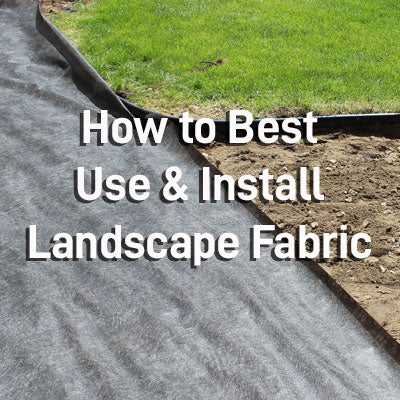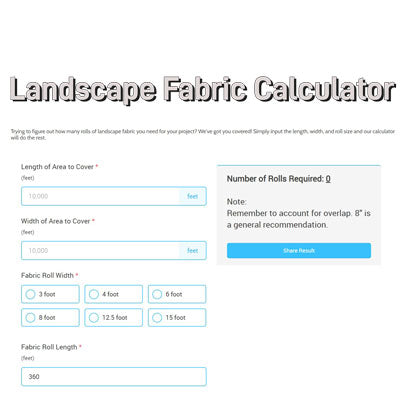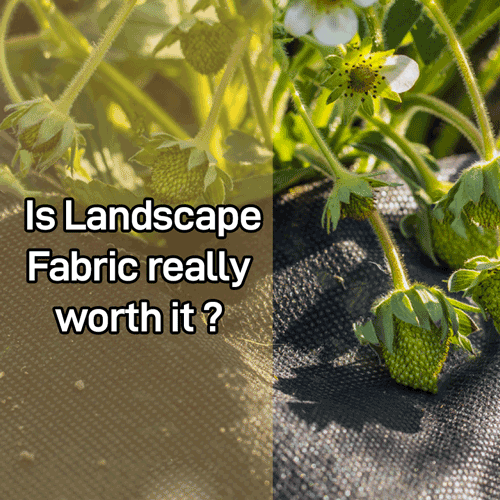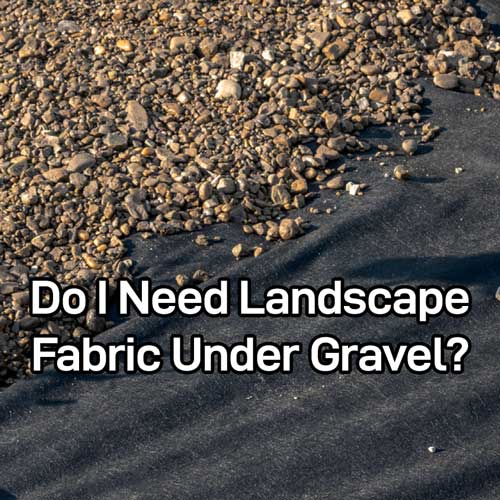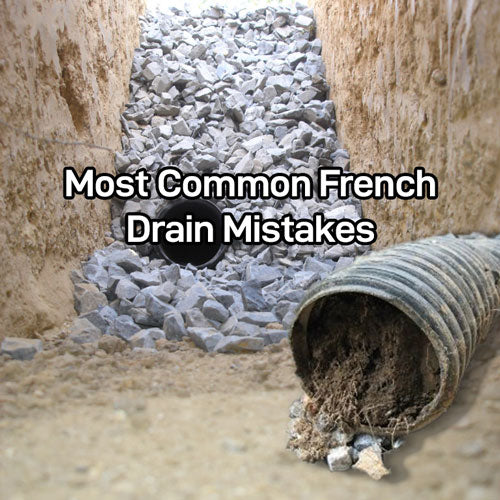Dec 16th, 2020
Pro Fabric Supply - Phone (800) 520-7731
Email: support@ profabricsupply.com
5 Reasons Why Landscape Fabric
Is Worth Every Penny

Many Gardeners wonder if Landscape Fabric is truly worth the time and effort
As a gardener, you want to do all you can to support the health of your plants and sustain their productivity for as long as possible. To do this, you must protect your plants from weeds, and environmental factors. Fortunately, numerous tools are available to ease this job for you. One that can defend against these issues simultaneously is landscape fabric.
If you’re unsure of whether you should incorporate it into your plant care practices, read on to see all the reasons why landscape fabric is worth it.
Landscape Fabrics are beneficial because:
- Can Lessen Erosion
- Helps to Control Weeds
- Essential for Xeriscaping
- Economic Alternative to herbicide
- Landscape Fabric and Mulch Are A Dynamic Duo
Landscape fabric can lessen erosion
One of the many benefits associated with drainage fabric is this material’s ability to control erosion. Erosion control / rip rap fabric can help maintain stability on hillsides, preventing the soil from sliding during rainy seasons. Using a nonwoven permeable fabric underneath a layer of soil, or aggregate typically yields the best results.
The water flows through the fabric while still holding your hillside and vegetation in place. Areas with heavy rains, or newly constructed hillsides are particularly susceptible to erosion and installing fabric can help mitigate these risks.
By preventing soil erosion, landscape fabric can also defend your garden or crop from nutrient depletion in the soil. Water erosion can wash away critical nutrients and fertilizer.
The application of landscape fabric will also help prevent "off-site" impacts of erosion, primarily the risk of washing pesticides into sensitive areas near your garden. In this way, landscape fabric can help protect your plants and juxtaposed crops.
(Source: Ontario Ministry of Agriculture, Food and Rural Affairs; SF Gate)
In general a good fabric for erosion control is a Non-woven 6-8oz fabric which are available here >
Landscape fabric helps to control weeds
Weeds are unwanted in gardens and crops. They rob your plants of nutrients by competing for space and sun and ultimately prevent the development of critical flowers and fruits due to the competitive pressure they impose on your plants. Removing them isn’t always easy but our weed prevention fabric will help.
Many of these intrusive species like Horsetail weed are specialized and grow from broken or damaged stems and roots.
If you are looking for an option to grow plants or garden without having mulch covering around the plants then using a white landscape fabric is a great option that is UV stabilized to last longer in the sun. It also has planting stripes to help organize your plantings.
Instead of forcing yourself to keep a constant eye out for any undesirable growth its better to help prevent them in the first place.
How does Landscape weed barrier fabric work?
Landscape weed block fabric also also called a weed tarp provides a physical separation layer for the soil, it acts as a barrier to rogue weed seeds from meeting the soil. Fabric will not prevent 100% of weeds from sprouting as some might make it through cut planting holes in the fabric, or may even grow in soil that is on top of the weed barrier itself.
Note: If you are looking for a barrier to prevent weeds and you aren’t concerned about getting water to the soil below then a weed tarp is another option to consider.
Soil can be blown in by the wind, and seeds can be carried in by the wind as well as by birds overhead. However, under gravel weed block fabric should dramatically reduce the quantity and stature of new seeds germinating.
Heavy Duty Weed Barrier Fabric
View the full line of Weed Barrier Fabrics here >
Landscape fabric and weed block is helpful as it interferes with the weeds’ access to life-giving sunlight.
Landscape fabric is an essential for Xeriscaping
More and more homeowners are taking a liking to the practice of xeriscaping, a style of landscaping that significantly reduces water use and, thus, the need for irrigation. (It can also be used to eliminate irrigation.) This practice is highly popular in areas commonly faced with drought or otherwise water-challenged environmental conditions.
Still, it is not exclusive to such regions. Those aiming to reduce their water consumption for conservation purposes are also highly encouraged to take up xeriscaping, as you will still be able to maintain a beautiful yard while cutting back on your environmental impact.
(Source: National Geographic)
Using strong, breathable, yet reasonably permeable landscape fabric is especially important in xeriscapes. Since the amount of water used in these landscapes is reduced, the soil is much more vulnerable to rising temperatures, which may predispose the roots to the heat stress damages listed above.
Pro Tip: Keep in mind that using landscape fabric can be a bit tricky in windy areas. A great way to ensure the fabric stays where you place it is to use 6" long landscape pins or stakes. By pinning down the fabric every 3 feet you can better ensure the fabric won't blow away in high winds or get moved out of place before you place stone on top.
Full article on the benefits of using landscape fabric under gravel here:

Home with front yard Xeriscape stone garden
If you're interested in Xeriscaping or creating a stabilized gravel path or driveway with fabric underneath then read the full article on how best to place landscape fabric under gravel here.
Landscape fabric is an economic alternative to herbicide
The use of landscape fabric in your home garden can be money-saver and an excellent alternative or adjunct to expensive chemical applications.
The application of chemical herbicides in your garden or crop can be effective, however many are looking for more natural solutions (Source: IntechOpen; IntechOpen):
The financial advantages of landscape fabric allow you to avoid expensive herbicides and other forms of weed control. For example, a homeowner in the US would have to pay the average gardener between $120-$150 for a single weed removal service at a typical rate of $30 per hour. This does not include the service of applying herbicides to your lawn and garden. (Source: Fixr)
According to recent estimates, American Farmers have paid $56 million for soybean crops alone due to the cost of herbicide application (about $35 per acre). Whether they are a farmer or a home gardener, an individual plant keeper could face hundreds of dollars in costs for certain herbicides, depending on the brand and amount they need. (Source: University of Nebraska-Lincoln)

Landscape fabric and mulch are a dynamic duo
Combining mulch with landscape fabric is a great way to ensure long-lasting benefits to your plants’ health and crop yields. Not only do the two work together to insulate and shield the soil from unwanted weather effects and weeds, but they also enhance the nutritional benefits of the mulch's decomposition.
As mulch breaks down, it provides nourishment to the plants due to the beneficial organic matter. The landscape works alongside the decomposing mulch, keeping these nutrients in place by defending against erosion and maintaining a suitable microclimate for microorganisms.
The mulch itself also offers advantages to microorganism populations that may be living in your garden, specifically “nitrifying bacteria and mycorrhizal fungi.” Nitrifying bacteria are crucial to your plants’ health. Their function is to make inorganic compounds organic, essentially “feeding” your plant. Specifically, they are known to convert ammonia into nitrate, a critical compound for protein synthesis. (Source: Biology Online; BBC)
Mycorrhizal fungi, on the other hand, help plants in the following ways (Source: University of Nevada):
- Increase resistance to water stress
- Support water intake
- Assist the plant in nutrient uptake: Mycorrhizae have also been known to store nutrients, which can greatly benefit your plant if nutrients are ever in short supply.
- Increase access to various nutrients by breaking down rock
- Supporting disease resistance
Note: You can only reap these benefits if you leave enough space around the base of your plant for the broken-down organic material to get through. Otherwise, the fabric will keep it out. This is completed by cutting a hole around where the base of the plant is located. During the winter you can use our frost protection blanket to extend your harvest season by keeping the temperature under the blanket higher for the plants while still allowing air to flow through.
Landscape fabric can also help with inorganic mulches since not all materials you use to mulch your soil are organic or even beneficial. If you use inorganic mulch materials, they can also break down over time, and the effects will be far more harmful.
Rather than increasing your plants' health and resilience, this may leech harmful chemicals into the garden or crop. However, the landscape fabric positioned underneath will prevent the materials from sinking into the soil.

Weed Barrier fabric under gravel step pathway
Landscape Fabric and Frost
Using our frost block fabric can help extend the harvest time and flowering season by keeping the air warmer underneath it than above it. Our freeze cloth for plants is available in various roll sizes.
Bottom Line
Reducing the time and effort managing weeds and promoting healthy plants is great for any gardener. If you'd like assistance in selecting a fabric for your next project give us a call and one of our customer service reps would be glad to help.
Phone (800) 520-7731
Email: support @profabricsupply.com


